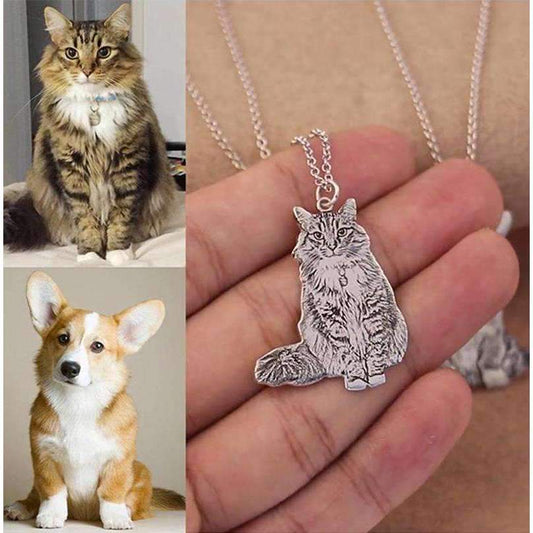Clicker training is a popular and effective method for teaching cats new behaviors and curbing unwanted ones. This guide provides a comprehensive approach to using clicker training with your feline friend, from understanding the basics to troubleshooting common challenges. With patience, consistency, and the right tools, you can use clicker training to communicate with your cat and reinforce positive behaviors, such as keeping them off kitchen counters.
Key Takeaways
- Clicker training establishes clear communication between you and your cat, marking desired behaviors with a distinct sound.
- Essential supplies for clicker training include a reliable clicker, enticing treats for positive reinforcement, and a distraction-free environment.
- To discourage counter-surfing, use deterrents, make the counter unattractive, and reinforce alternative good behaviors with the clicker.
- Expand training beyond the counters by teaching basic commands, incorporating tricks, and ensuring consistent, patient training sessions.
- Troubleshoot common issues by adjusting your approach for different cat personalities and maintaining long-term training success.
Understanding Clicker Training for Cats

The Basics of Clicker Training
Clicker training is a form of positive reinforcement that is highly effective for cats. The first step is to build an association between the clicker's sound and a treat, creating a positive experience for your feline friend. This method allows you to communicate precisely which behavior is being rewarded.
- Introduce the clicker and its sound to your cat.
- Follow with an immediate treat to create a positive link.
- Repeat this process to strengthen the association.
Clicker training capitalizes on a cat's natural behavior and instincts, making it a rewarding experience for both you and your pet. It's not just about teaching tricks; it's about enhancing the bond between you and your cat.
Once your cat understands that the clicker sound signifies something good, you can begin to use it to guide their behavior. This technique is especially useful for pinpointing exact moments, such as the peak of a jump or navigating through obstacles, helping your cat understand precisely what you are aiming for.
Benefits of Using a Clicker
Clicker training is a powerful method for teaching your cat desired behaviors and tricks. The precision of a clicker allows you to mark the exact moment your cat performs correctly, making it clear to them what actions earn rewards. This immediate feedback is crucial for effective learning.
- Clickers create a consistent signal that transcends human language barriers.
- They provide a way to communicate with your cat without raising your voice or using physical gestures.
- The sound of the clicker becomes a promise of a reward, which can motivate your cat to repeat the behavior.
By using a clicker, you're not only training your cat but also building a stronger bond through positive reinforcement.
While some customers have had issues with the audibility and durability of certain clickers, the overall consensus is that when used correctly, clickers are an invaluable training aid. It's important to select a clicker that is easy to use and provides a clear, distinct sound to avoid confusion and ensure the best training experience.
Introducing Your Cat to the Clicker
Introducing your cat to the clicker is a crucial step in clicker training. Initially, the clicker's sound is meaningless to your cat; it's just another noise in their environment. Your goal is to create a positive association between the clicker's sound and something your cat loves: treats. Start by ensuring your cat is attentive, then press the clicker and immediately offer a treat. Repeat this several times during short training sessions.
Patience is key when introducing your cat to the clicker. It's important to provide a comfortable environment where your cat can focus without distractions. Remember, every cat is different, and some may take longer to make the connection between the clicker and rewards.
Once your cat starts to recognize the clicker sound as a precursor to treats, you can begin using it to shape their behavior. Clicker training leverages the power of immediate positive reinforcement, which is more effective than punishment for behavior modification. Here's a simple list to follow when starting out:
- Press the clicker and give a treat.
- Wait for your cat to do something you like, then click and treat.
- Gradually increase the complexity of behaviors before clicking.
- Always follow the click with a treat to maintain the association.
Before You Start: Here Are the Supplies You'll Need

Choosing the Right Clicker
When selecting a clicker for your cat, it's crucial to consider the sound and ease of use. The right clicker should have a clear, distinct sound that your cat can hear, but not so loud as to startle or discomfort them. Some clickers come with adjustable volume, which can be beneficial if you find the click too loud or too soft. Additionally, the clicker should be comfortable for you to hold and press, as you'll need to be able to click it at precise moments during training.
- Look for clickers with positive reviews regarding durability and sound quality.
- Avoid clickers with a history of getting stuck or having buttons that are difficult to press quickly.
- Consider the ergonomics of the clicker; it should fit comfortably in your hand.
Remember, the clicker is a tool to communicate with your cat effectively. It's worth investing in a quality clicker that both you and your cat are comfortable with.
Customer feedback often highlights the importance of a reliable clicker. While some users report ease of use and convenience, others have experienced issues with audibility and button quality. It's essential to weigh these reviews and select a clicker that consistently performs well, ensuring that your training sessions are smooth and effective.
Essential Treats for Positive Reinforcement
When it comes to clicker training, treats are the currency of positive reinforcement. The right treat can make all the difference in motivating your cat and reinforcing good behavior. It's important to choose treats that are both healthy and irresistible to your feline friend.
Here's a quick guide to selecting treats for your cat's training sessions:
- Variety is key: Cats can be finicky, so having a range of flavors can keep them interested.
- Size matters: Opt for small treats that can be eaten quickly to maintain focus on training.
- Health first: Look for treats with nutritional value that complement your cat's diet.
Remember, the goal is to make training a positive and rewarding experience for your cat. The treats you use should be something they look forward to, not just another bite of their regular meal.
While shopping for treats, consider options like the Tiny Tiger Chicken & Seafood Flavor Cat Treats or the American Journey Chicken Soft & Chewy Cat Treats. These products are not only tasty but also designed to capture your cat's attention and keep them engaged during training sessions. And when you see your cat performing well, don't forget to praise them along with offering a treat; this combination of rewards will help solidify the positive behavior.
Creating a Distraction-Free Training Environment
To ensure the success of clicker training, it's crucial to create an environment that allows your cat to focus. Minimize distractions by choosing a quiet room where your cat feels comfortable and secure. This should be a space free from loud noises, other pets, and excessive foot traffic.
- Turn off the TV and mute your phone to prevent sudden sounds from startling your cat.
- Close windows and doors to reduce outside noise and prevent your cat from being visually distracted by birds or passing cars.
- Clear the room of toys and other items that might compete for your cat's attention during training sessions.
Remember, a calm and predictable environment will help your cat concentrate on the training and respond better to the clicker.
Step-by-Step Guide to Train Your Cat to Stay Off the Counters

Add a Deterrent
To effectively train your cat to stay off the counters, adding a deterrent is a crucial first step. This method does not involve punishment but rather makes the act of jumping onto counters less desirable for your feline friend.
- Sticky double-sided tape: Place this on the edges of the counter. Cats dislike the sticky sensation on their paws, making it an effective deterrent.
- Motion-detection canister: This device sprays air when it detects movement, providing an immediate consequence without causing harm or fear.
Remember, the goal is to create a negative association with the counter without instilling fear. The deterrent should be unpleasant enough to discourage the behavior but not so severe as to create a fearful or anxious cat.
Another option to consider is using crinkled aluminum foil. The texture and noise are generally disliked by cats and can act as a deterrent, though it may not be suitable for every household. It's important to combine these deterrents with positive reinforcement to ensure your cat understands the desired behavior.
Make the Counter Less Appealing
To discourage your cat from viewing the countertop as their personal space, it's crucial to remove any incentives that might attract them. Ensure that the counter is always clean, devoid of any food remnants, cat treats, or their food bowl. This simple step can significantly reduce the allure of the counter for your curious feline friend.
- Remove any food items or bowls from the counter.
- Clean the counter thoroughly to eliminate crumbs or scents.
- Consider alternatives for water sources if your cat is attracted to the sink.
By consistently keeping the counter uninviting, your cat will have fewer reasons to leap onto it, aiding in the effectiveness of clicker training.
Additionally, some cat owners have found success using deterrents like crinkled aluminum foil, which cats generally dislike due to its texture and noise. However, this method may not be suitable for every household. The key is to find a solution that works for you and your cat, and to maintain a consistent approach.
Start Clicker Training
Once your cat is familiar with the clicker, it's time to begin the training process. Start with simple commands that your cat can easily follow, such as 'sit' or 'stay'. Each time your cat successfully follows the command, mark the behavior with a click and immediately provide a treat. This creates a strong association between the click sound, the desired behavior, and the reward.
Consistency is key in clicker training. Always use the same click sound and reward your cat promptly to reinforce the behavior.
As you progress, gradually increase the complexity of the commands. Remember to keep training sessions short and enjoyable to maintain your cat's interest. Once they lose interest, it's time to move on and pick up the game another day.
Use the Clicker to Reinforce Your Cat's Good Behavior
Once your cat understands that the clicker is a signal for good behavior, you can use it to guide them towards the actions you want to encourage. When your cat chooses an appropriate spot to rest or play, such as the floor or a cat tree, use the clicker to mark that behavior as positive. This immediate feedback helps your cat make the connection between the sound of the clicker and their good choices.
By consistently using the clicker to reinforce good behavior, you create a language of positive reinforcement that your cat will understand and respond to.
Remember to immediately follow the click with a treat or whatever motivates your cat—be it treats, praise, or affection. This ensures that the positive behavior is not only marked but also rewarded, making it more likely for your cat to repeat it in the future.
Train Your Cat to Use Alternatives
Once your cat understands that the counter is off-limits, it's crucial to provide them with acceptable places to climb and perch. Cats have a natural instinct to observe their territory from a high vantage point, so it's important to cater to this behavior.
To encourage your cat to use these alternatives, follow these steps:
- Place a cat tree or climbing tower in a room where your cat spends a lot of time.
- Use the clicker to guide your cat towards the new furniture, clicking and rewarding any interaction.
- Gradually increase the challenge by encouraging your cat to climb higher before receiving a treat.
- Consistently reward your cat for using the alternative, reinforcing the positive behavior.
Remember, the key to successful clicker training is consistency. Always have treats ready to reward your cat's good choices, and avoid punishing them for mistakes.
By providing your cat with their own space to climb and explore, you're not only keeping them off the counters but also enriching their environment. This can lead to a happier, more contented feline companion.
Expanding Training Beyond the Counters

Teaching Basic Commands
Once your cat is familiar with the clicker, you can begin teaching basic commands. Start with simple commands like 'sit' or 'come' to build a foundation for more complex tricks. Use the clicker to mark the exact moment your cat performs the desired action, followed by a treat as a reward.
- Sit: Gently press on your cat's hindquarters while saying 'sit' and click the moment your cat sits down.
- Come: Call your cat's name and click as soon as they approach you, rewarding them with a treat.
Consistency is key in clicker training. Repeat these exercises in short, frequent sessions to reinforce the behaviors.
As your cat masters these commands, you can gradually introduce new ones like 'high five' or 'fetch'. Remember to always end training sessions on a positive note to keep your cat engaged and eager to learn.
Incorporating Tricks and Fun Activities
Once your cat is comfortable with basic clicker training commands, you can begin to introduce more engaging activities and tricks. This not only enriches your cat's life but also strengthens the bond between you. Start with simple tricks that naturally align with your cat's behavior, such as 'sit' or 'high five'.
Remember, patience is key. If your cat struggles with a new trick, take a break and try again later with a different approach or toy.
To keep track of your cat's progress and maintain a structured approach, consider the following steps:
- Select a trick that you want to teach your cat.
- Use the clicker to mark the exact moment your cat performs the desired behavior.
- Immediately reward with a treat to reinforce the behavior.
- Practice the trick in short, frequent sessions to avoid overwhelming your cat.
- Gradually reduce the treats as your cat masters the trick, and continue to use the clicker for positive reinforcement.
Incorporating playtime with training can make the process more enjoyable for your cat. Use toys to capture your cat's attention and encourage them to engage with the trick. For example, you can use a toy to entice your cat to follow a 'come' command or to jump through a hoop.
Maintaining Consistency and Patience
Consistency is key when it comes to clicker training your cat. Just like any form of learning, cats benefit from a regular routine that reinforces the desired behaviors. Establish a training schedule and stick to it, even if progress seems slow. Remember, patience is just as important as the training itself; some cats may take longer to respond to clicker training than others.
Consistency in training not only helps your cat understand what is expected but also strengthens the bond between you and your feline friend.
Here are some tips to help maintain consistency:
- Set a specific time each day for training sessions.
- Keep sessions short and enjoyable to ensure your cat's attention.
- Gradually increase the complexity of tasks as your cat masters each step.
It's essential to be patient and not rush the process. Celebrate small victories and understand that setbacks are a normal part of learning. By maintaining a steady pace and a positive attitude, you'll create a rewarding experience for both you and your cat.
Troubleshooting Common Clicker Training Challenges

Dealing with Lack of Interest
When it comes to clicker training, one common hurdle is a cat's lack of interest in the training process. Understanding your cat's preferences and motivators is crucial to overcoming this challenge. Here are some strategies to pique your cat's curiosity:
- Experiment with different types of treats to find what your cat loves.
- Vary the training sessions to keep them short and engaging.
- Incorporate playtime into training to make it more enjoyable.
Remember, patience is key. Cats have their own personalities and may take time to show interest in clicker training.
If your cat remains disinterested, consider the timing of training sessions. Cats are more receptive when they are hungry and alert. Avoid training right after a meal or when your cat is looking to rest. Consistency is also vital; try to schedule training at the same time each day to establish a routine that your cat can anticipate.
Adjusting Your Approach for Timid Cats
Timid cats may require a more gentle and patient approach to clicker training. Focus on rewarding them with pleasurable rewards such as treats and under-the-chin scratches, which can be more motivating than the desire to please. Keep training sessions short and engaging, as cats can have shorter attention spans. Once they lose interest, it's best to conclude the session and try again another day.
- Start with less intimidating toys or treats.
- Gradually increase the complexity of tasks as your cat becomes more comfortable.
- Avoid forcing interactions; allow your cat to approach you.
Remember, the goal is to build trust and confidence in your timid cat through positive reinforcement and patience.
If your cat is not responding to training, take a break and revisit the activities after a few days. Consider introducing a new toy or treat to pique their interest. Always rule out any health concerns with a vet visit if your cat shows signs of aggression or distress.
Ensuring Long-Term Success
Ensuring long-term success in clicker training your cat requires a blend of consistency, adaptability, and ongoing engagement. Maintaining a routine is crucial, as it helps your cat to understand and predict the training sessions, reinforcing their learning. However, being responsive to your cat's changing needs and behaviors is equally important.
To maintain this consistency, develop a routine that aligns with your cat's natural behaviors and your own schedule. It's a delicate balance, but one that pays off in the long run.
Here are some steps to follow to keep your training efforts on track:
- Regularly schedule training sessions
- Keep sessions short and enjoyable
- Gradually introduce new commands or tricks
- Monitor your cat's response and adjust accordingly
By sticking to these practices, you can avoid common pitfalls such as overwhelming your cat or becoming inconsistent, which can lead to confusion. Remember, effective tracking of your cat's progress enables precision in your training efforts, and that's something to always prioritize.
Conclusion
In conclusion, clicker training is a powerful method for teaching your cat new behaviors and reinforcing good habits. By following the step-by-step guide provided, you can effectively train your cat to stay off counters and engage in positive actions. Remember, patience and consistency are key, and the bond that forms through this training process can be incredibly rewarding for both you and your feline friend. With the right approach and tools, such as a clicker, treats, and alternative climbing structures, you can communicate clearly with your cat and enjoy a harmonious household. Keep practicing, stay positive, and you'll be amazed at what you and your cat can achieve together.
Frequently Asked Questions
What is clicker training for cats?
Clicker training is a positive reinforcement technique used to communicate with your cat. It involves using a clicker to make a sound that marks the exact moment your cat performs a desired behavior, which is then followed by a treat to build a positive association.
Why is clicker training effective for cats?
Clicker training is effective because it provides clear and immediate feedback to the cat, helping them understand precisely which behavior is being rewarded. This method is based on positive reinforcement, which is more effective and humane than punishment for behavior modification.
How do I introduce my cat to the clicker?
Start by associating the clicker sound with a reward. Each time you click, immediately give your cat a treat. Repeat this process until your cat shows excitement at the sound of the clicker, indicating they've made the connection between the sound and the reward.
What supplies do I need for clicker training my cat?
You'll need a clicker tool, a selection of treats your cat loves for positive reinforcement, and possibly deterrents like double-sided tape or aluminum foil to discourage unwanted behaviors. Additionally, providing alternatives like a cat climbing tree can be helpful.
How long does it take to train a cat with a clicker?
The time it takes to train a cat with a clicker can vary. Cats generally take longer to train than dogs, and consistency and patience are key. Short, frequent training sessions are recommended, and progress may be seen over several weeks or months.
What if my cat loses interest in clicker training?
If your cat loses interest, it's important to end the session and try again later. Keep training sessions short and engaging, and ensure you're using high-value treats. If your cat consistently shows disinterest, you may need to adjust your approach or training environment.




